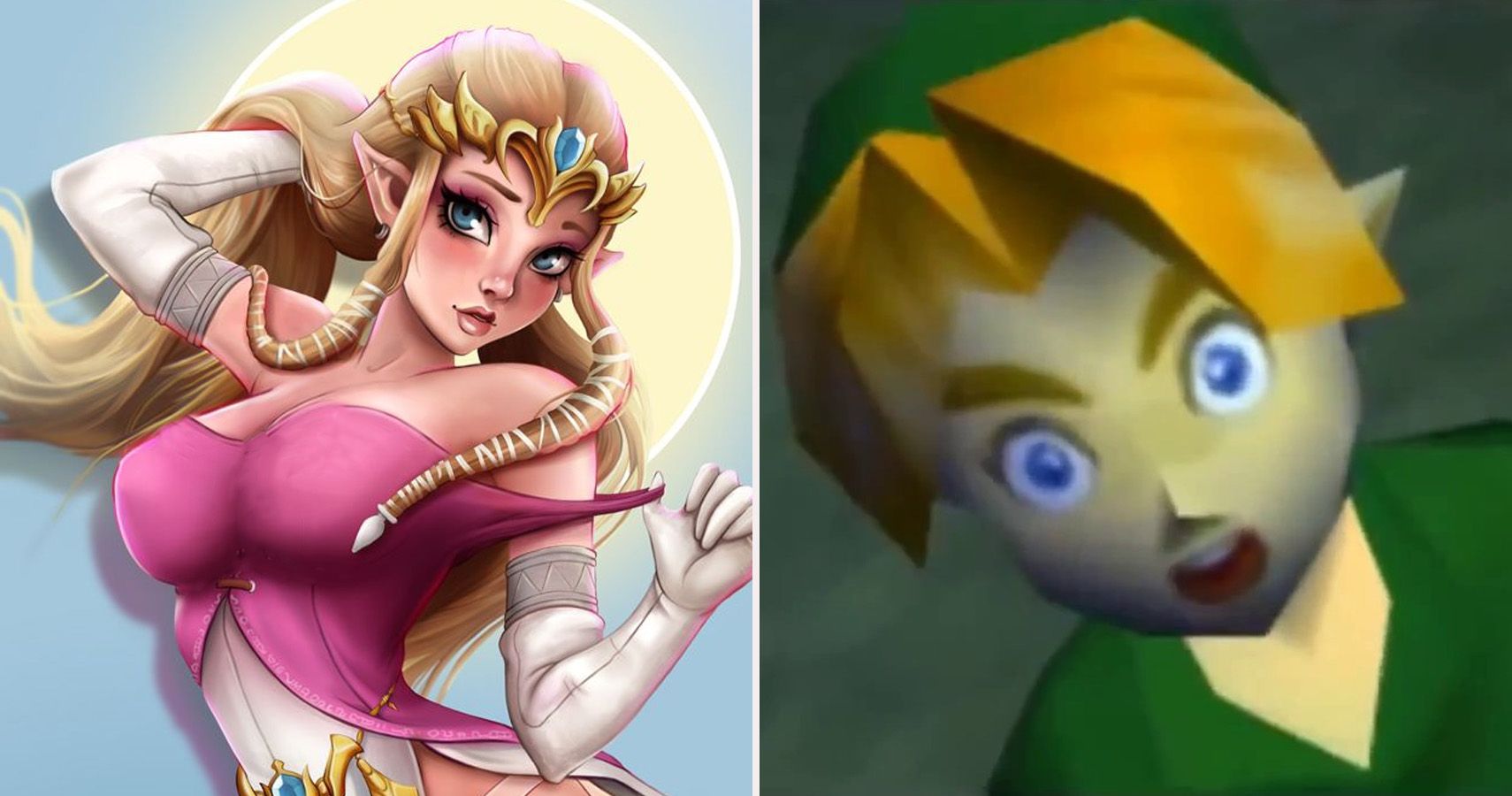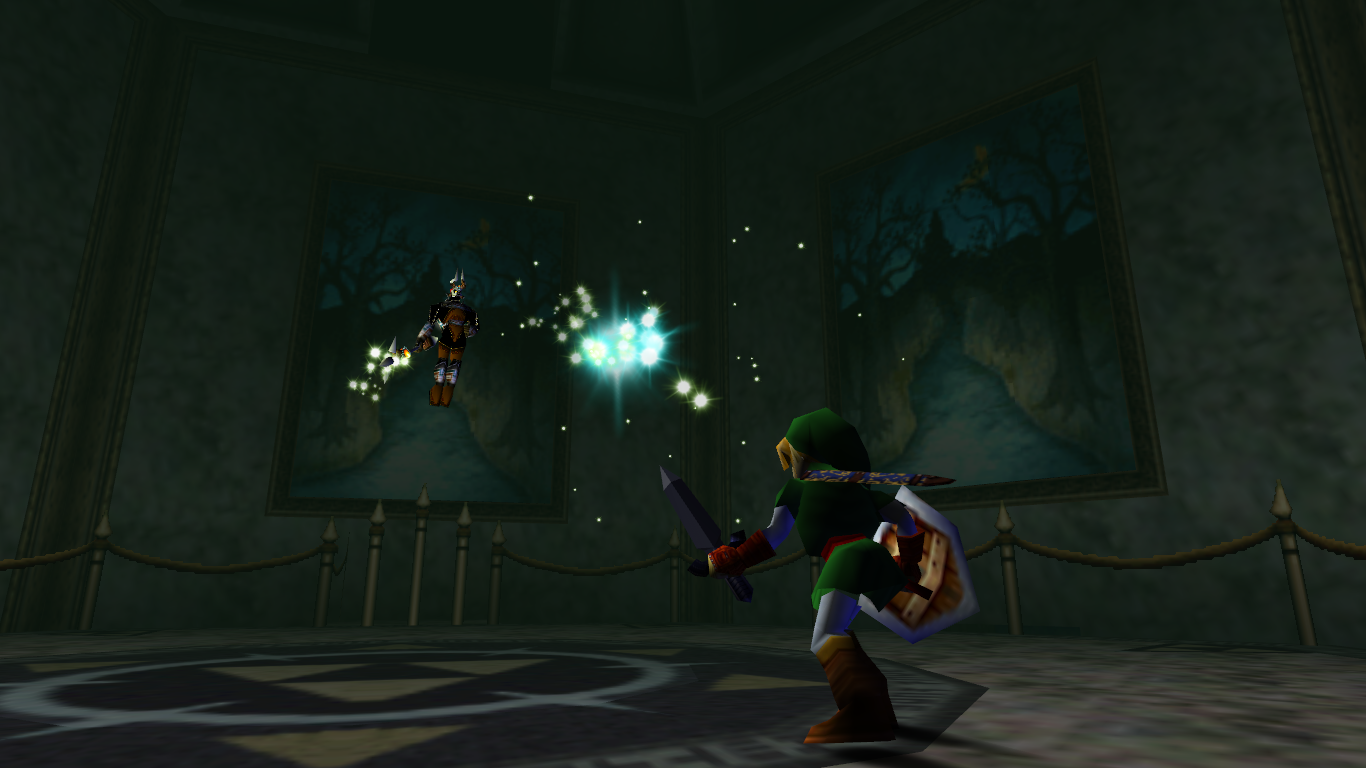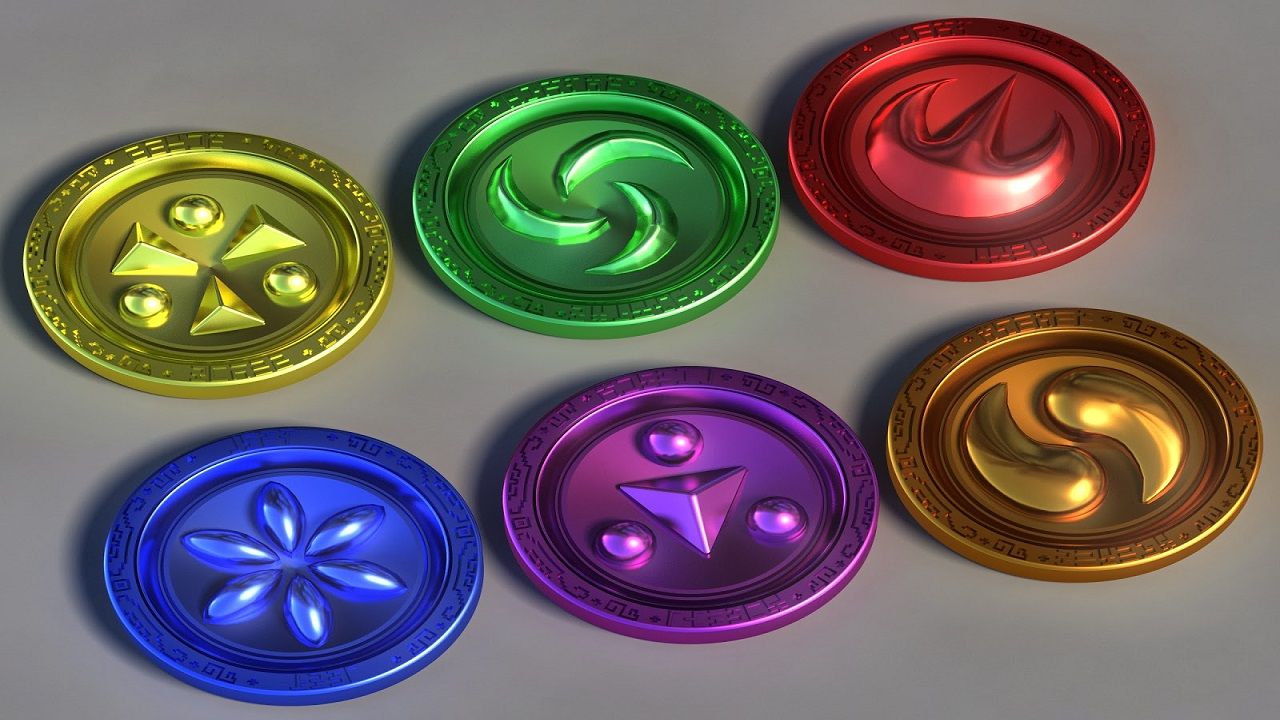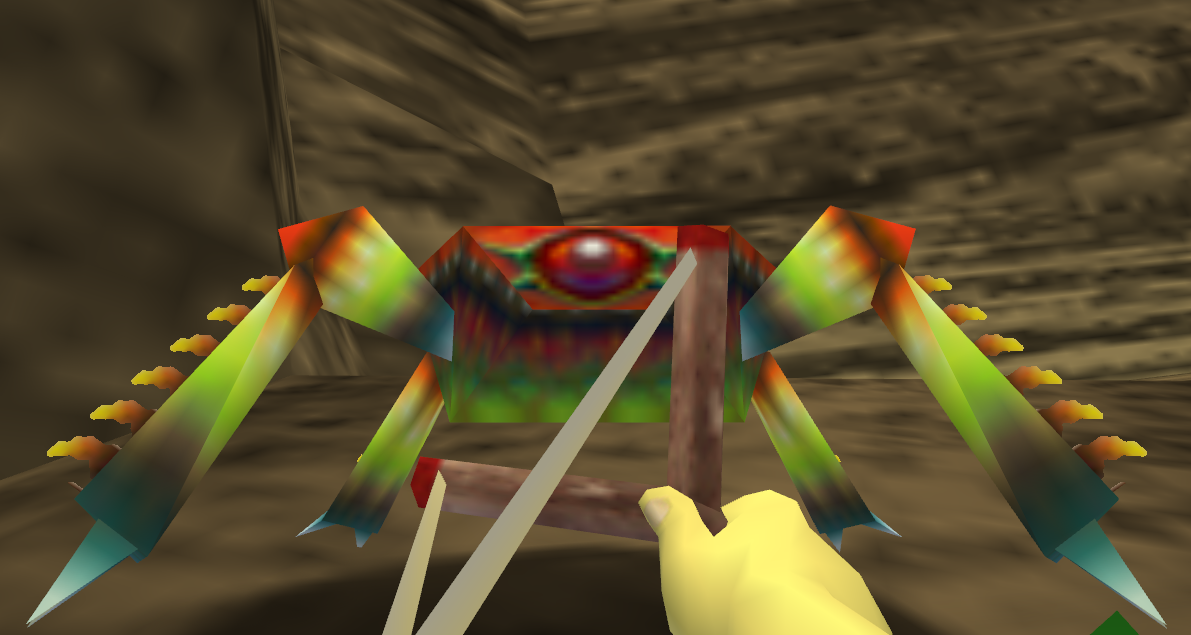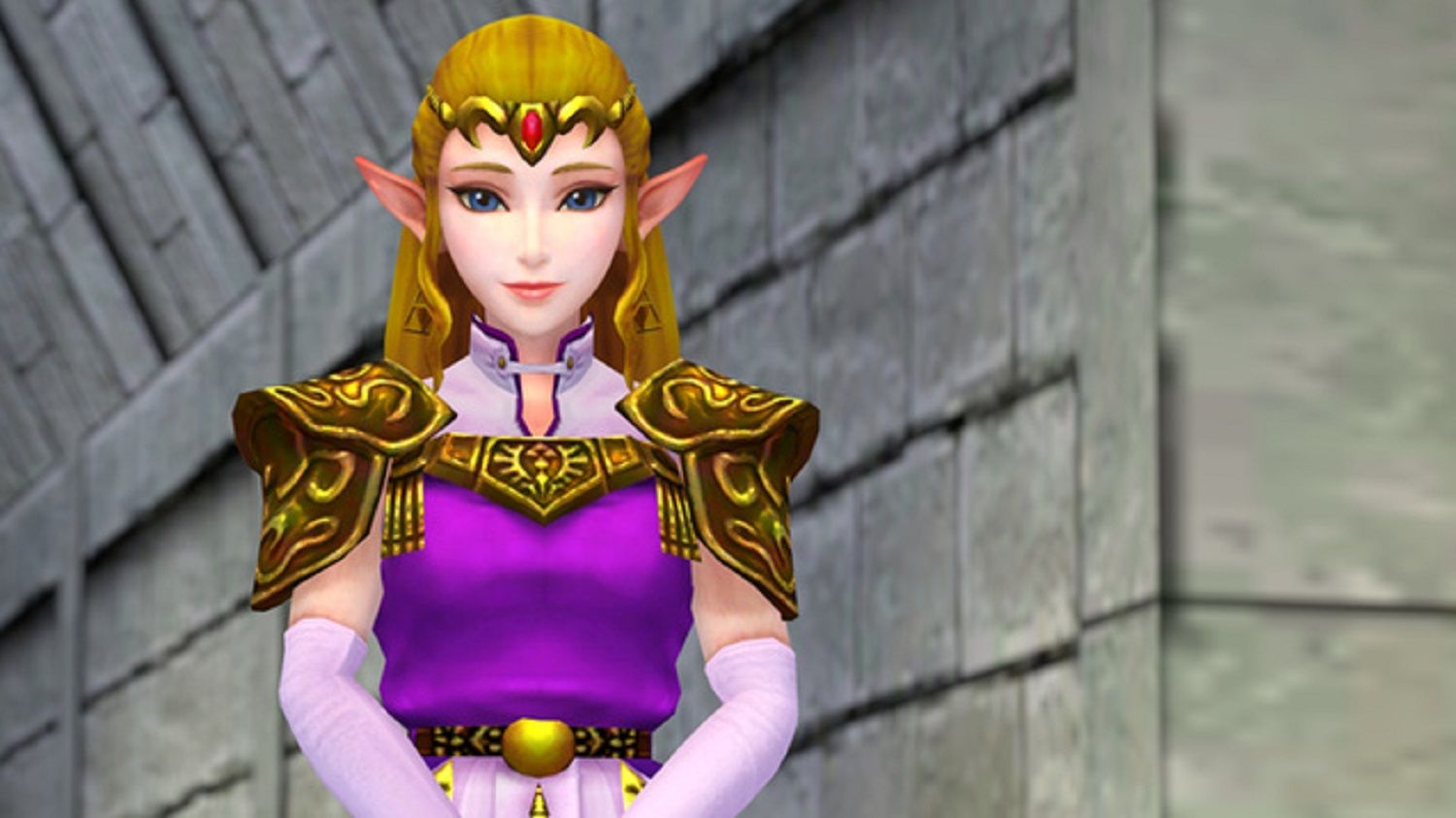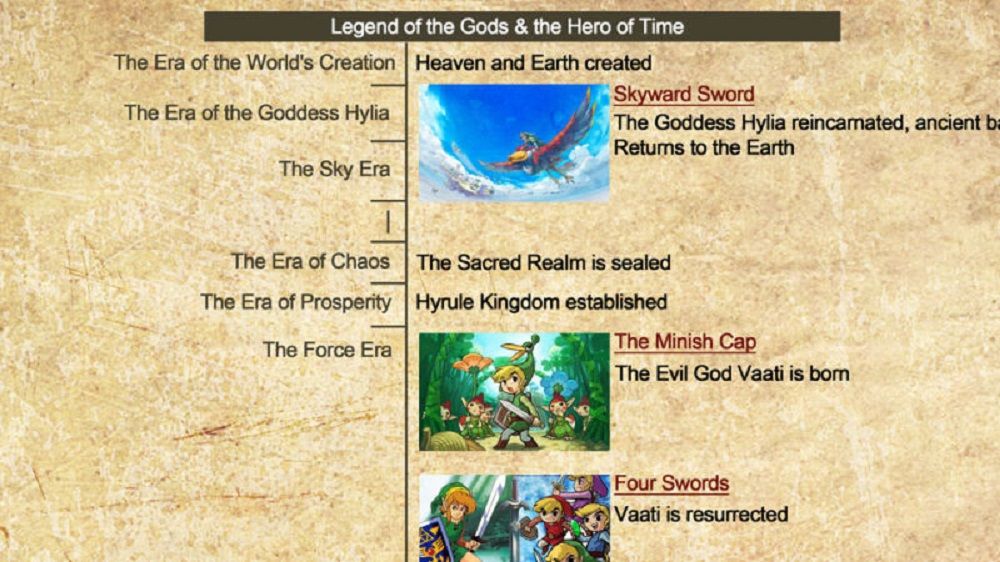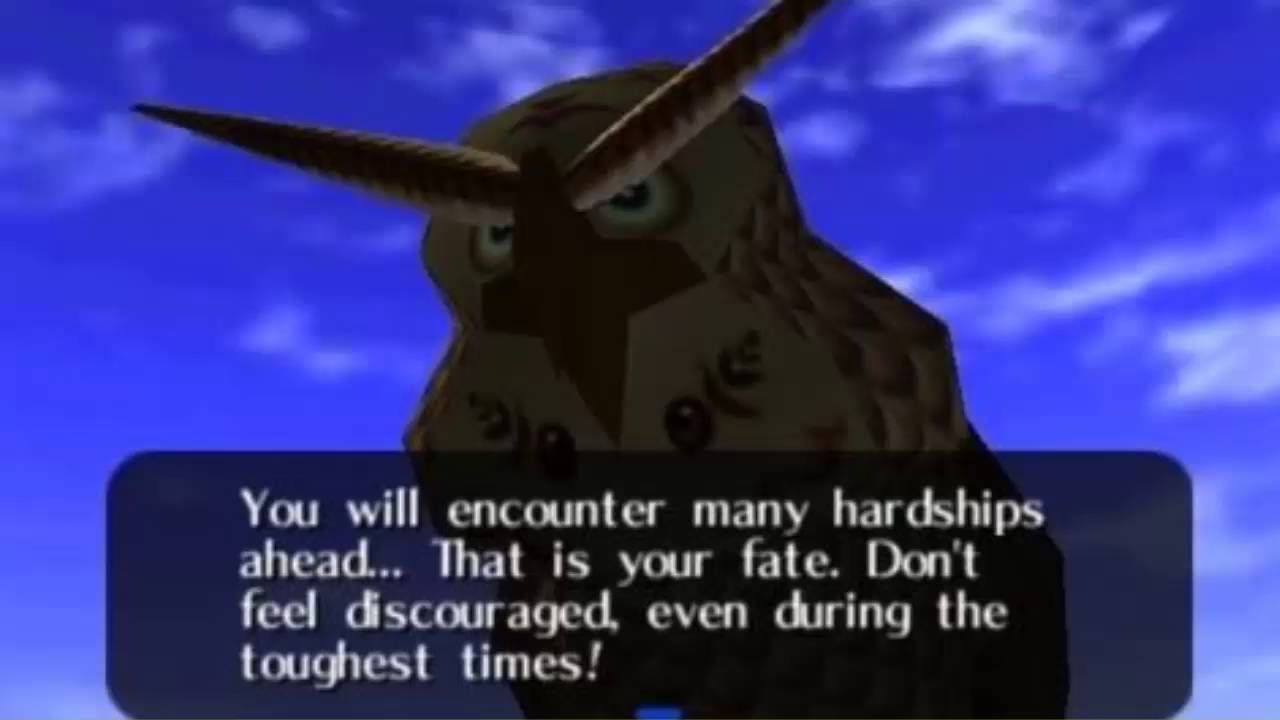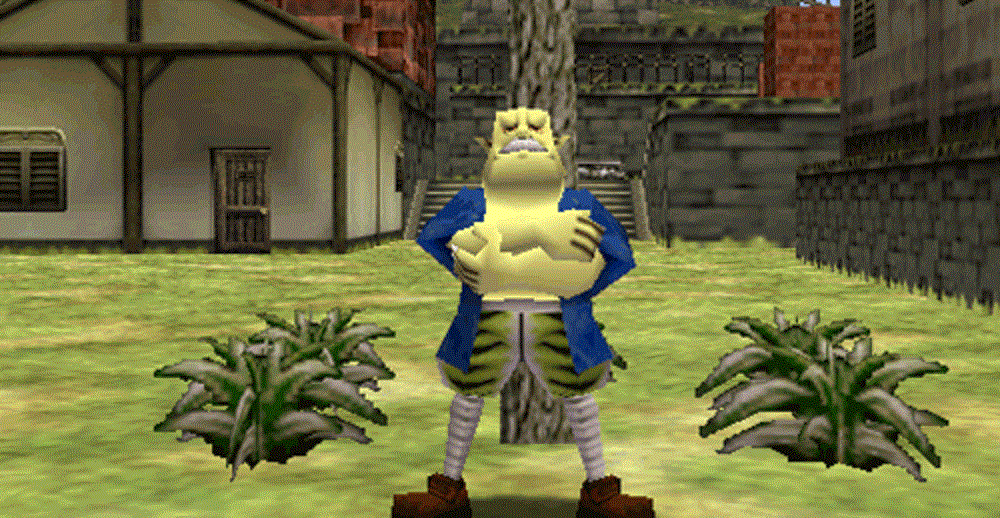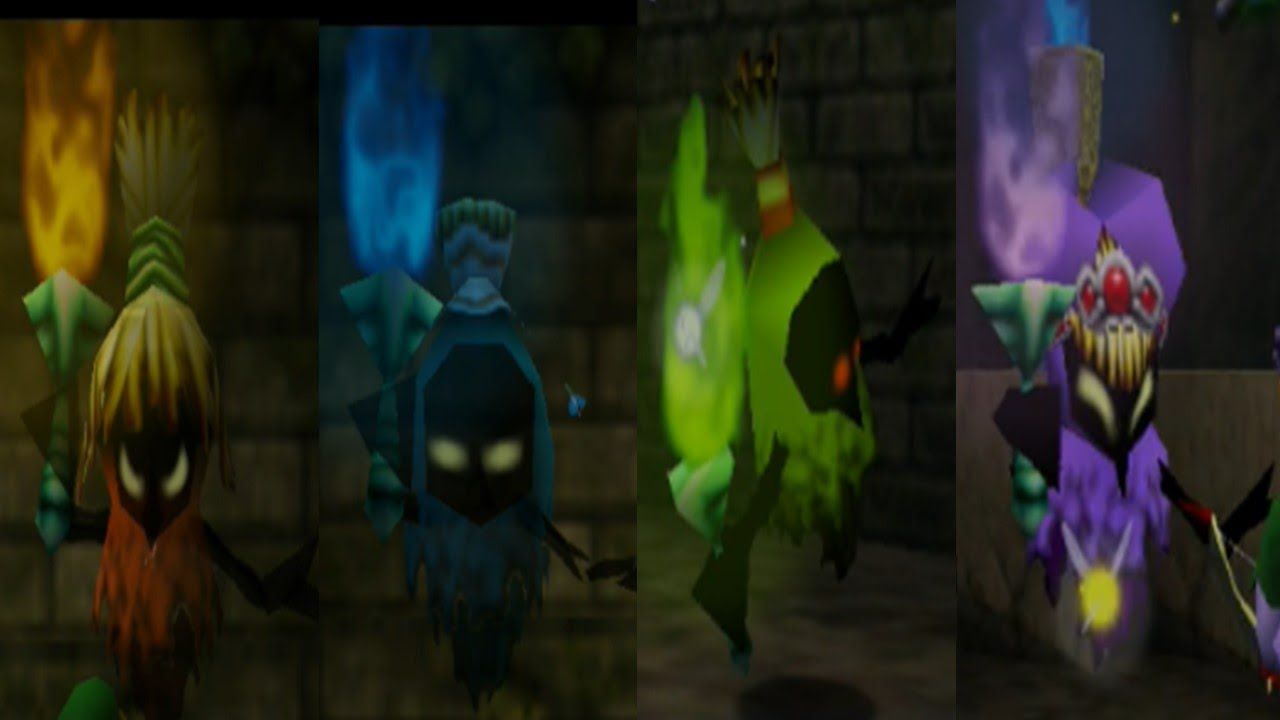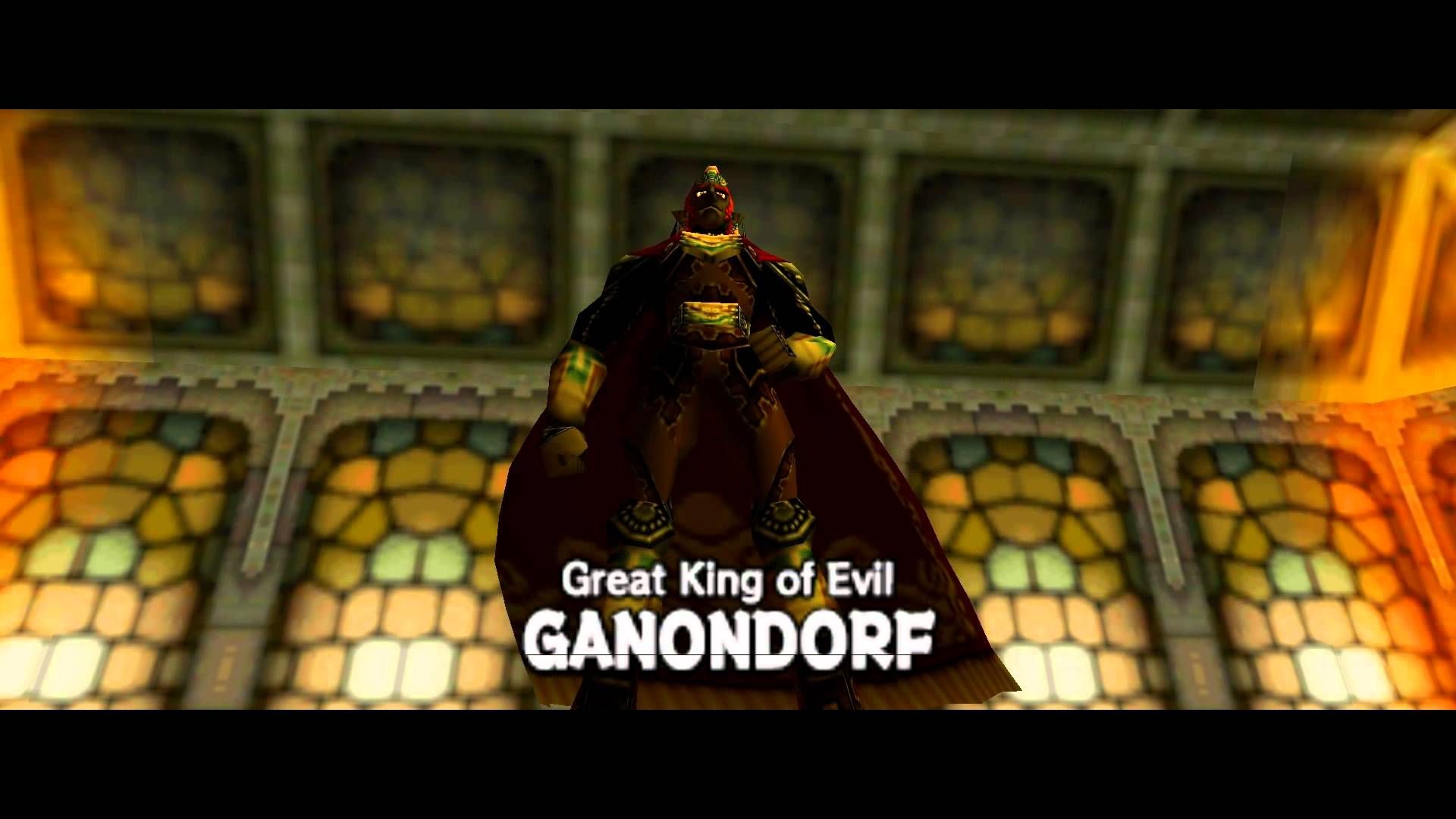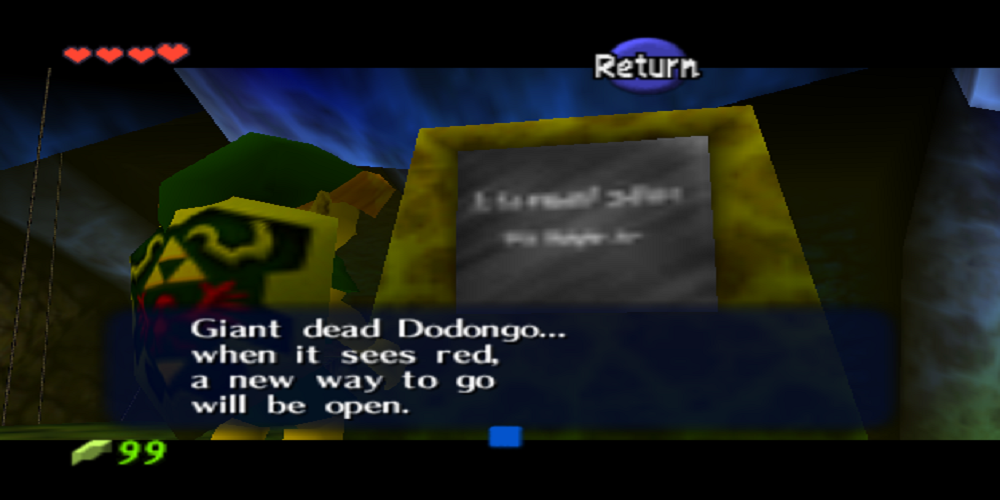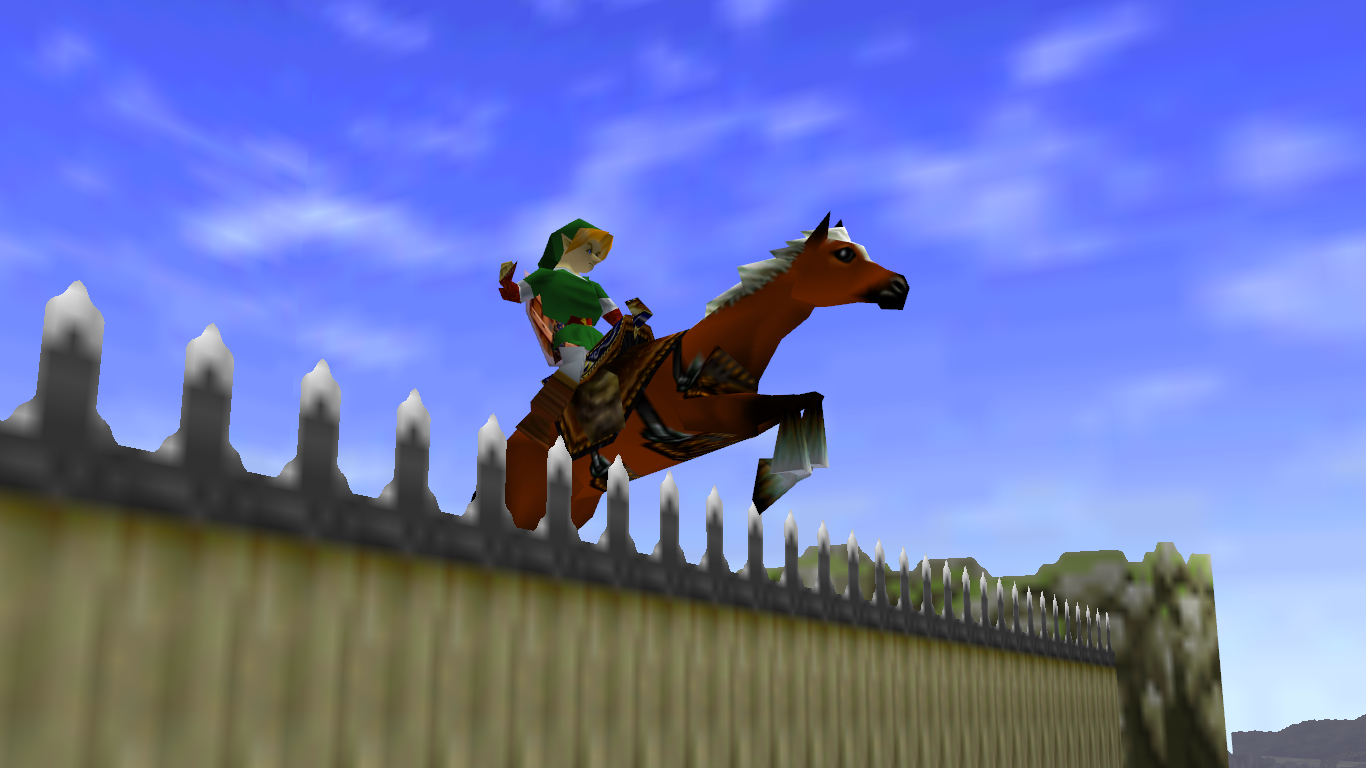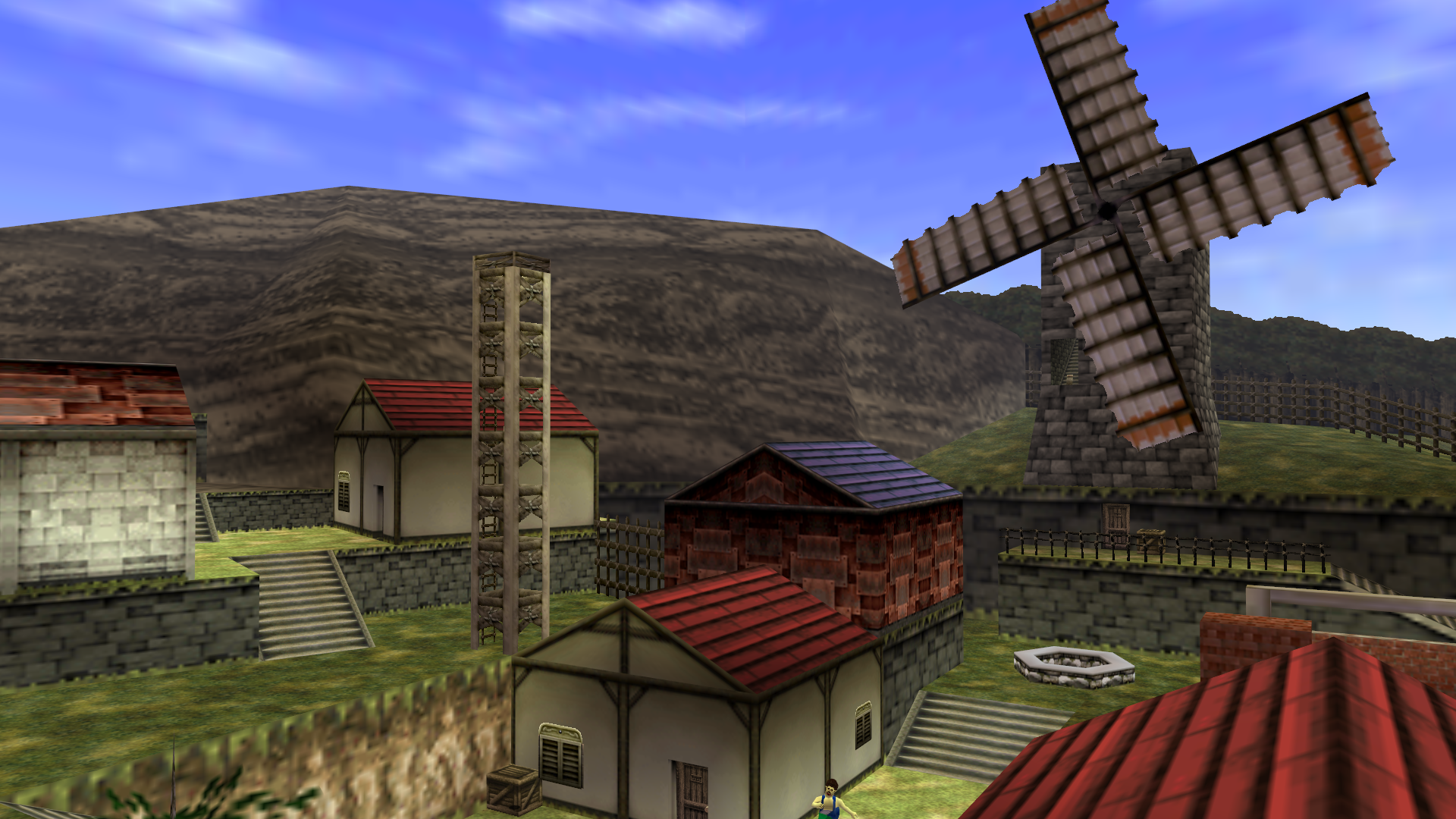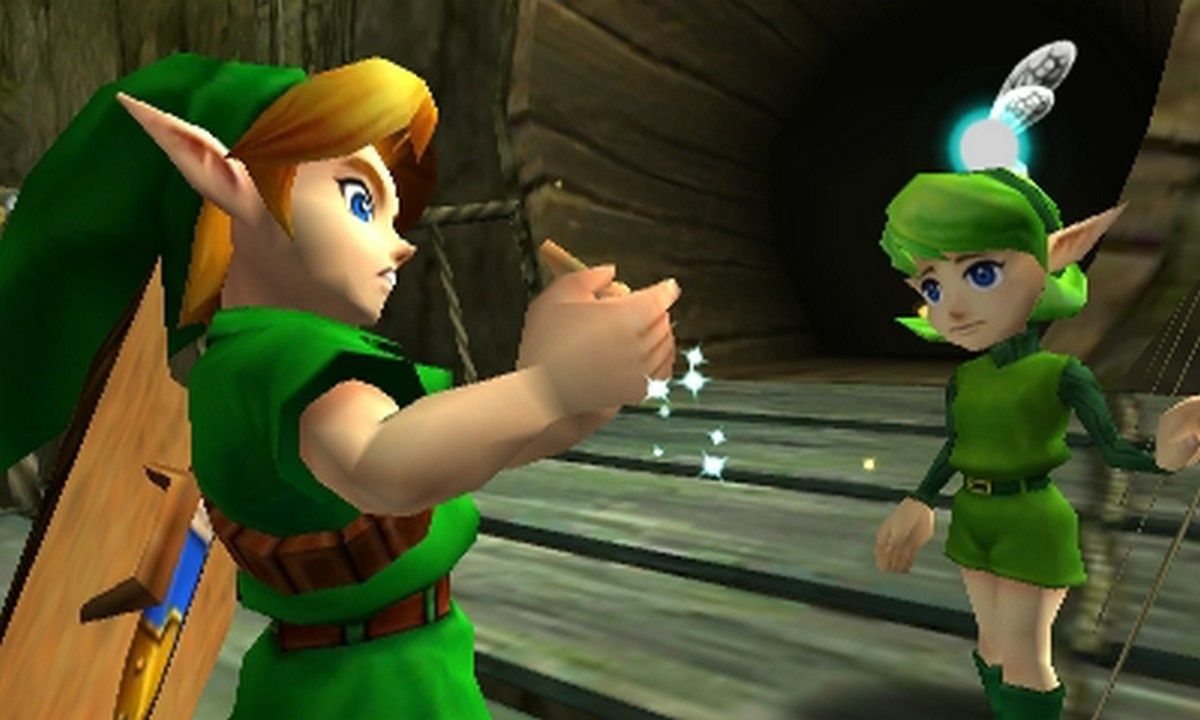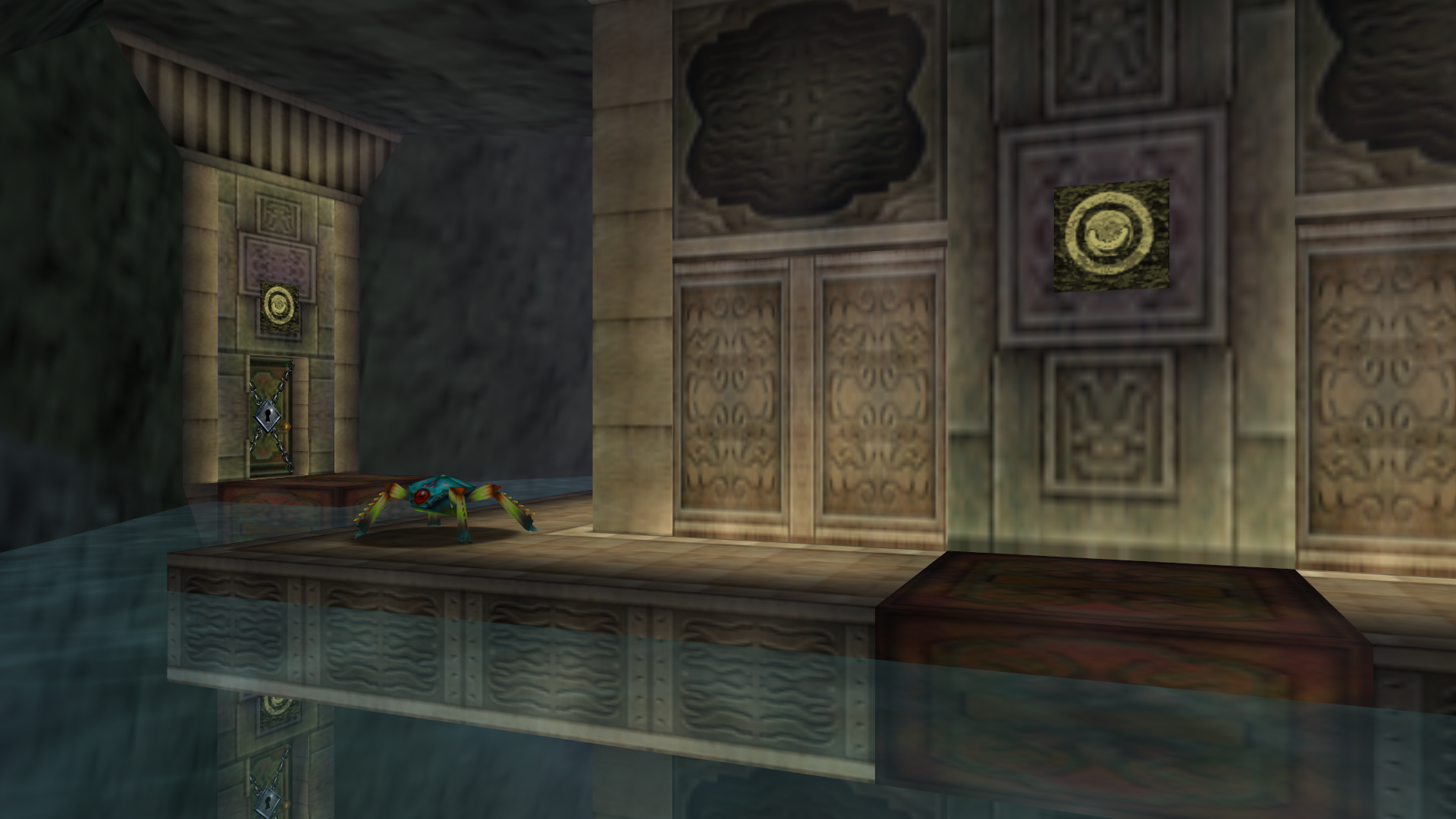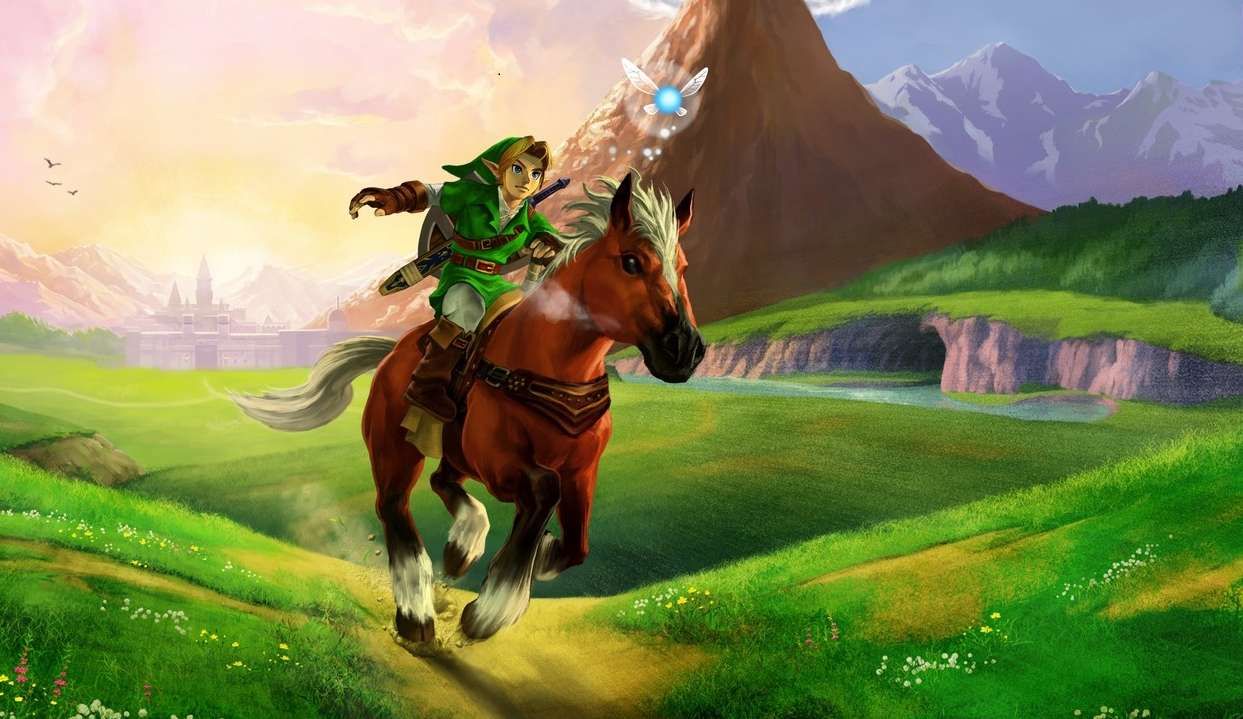TheGamer has already seen a massive influx of The Legend of Zelda: Ocarina of Time articles. We've covered crazy things, glaring plot holes, hidden secrets, and creepy elements. If there's something interesting about Ocarina of Time, we've probably focused on it at some point.
That said, there are still so many things to talk about concerning this iconic adventure game. There's a reason that people still continue to play this legendary title, and it's no surprise that Nintendo gave it an HD reboot on the Nintendo 3DS. There are just so many things hidden within this work of art, so we're constantly finding things to list.
For this particular article, we figured we'd bring all of you a collection of unique and interesting facts involving The Legend of Zelda: Ocarina of Time. There is an abundance of interesting tidbits littered throughout Link's journey. The trivia involved in this list covers a wide array of topics, including outside influences, developer commentary, and items that were cut from the final release.
What was your favorite fact from this list? Is there any interesting Ocarina of Time trivia that we left out? Let us know!
15 Oh, The Places You'll Van Gogh!
The Legend of Zelda: Ocarina of Time is filled with some pretty interesting and entertaining boss fights. Up until this release, Legend of Zelda fanatics were stuck fighting bosses in a purely top-down manner. The 3D infusion allowed us to walk the land of Hyrule in a third-person perspective, which completely transformed the franchise. Bosses felt challenging and imposing.
The Forest Temple did a great job using the gameplay mechanics to their fullest potential. The battle against Phantom Ganon had us dodging an apparition as he gallops into (and out of) paintings positioned within a hexagonal room.
If those paintings seemed eerily familiar, it's because the concept is borrowed from Super Mario 64. In fact, creators originally intended to use the same "painting entry" for each level in Ocarina of Time. It was scrapped to give Hyrule an open-world feeling.
14 A Song Of Ice And Wind
While we're on the subject of the Forest Temple, we might as well talk about an interesting development mystery surrounding the area. A few eagle-eyed fans already spotted this bit of trivia back when Ocarina of Time released, but we wanted to feature it here for all of you that may not know. It seems that The Forest Temple and The Water Temple were originally planned to be entirely different areas (and elements).
Many suggest that The Forest Temple was developed as The Wind Temple, with the Water Temple being the Ice Temple. There are actually a few pieces of evidence that back this up. For one, the medallions look like wind swirls and a snowflake, for each location respectively. Most telling are the representing zones in Ganondorf's Castle. The forest area is filled with giant fans, while the water area is slick with ice.
13 First Is Worst
Ocarina of Time marked the first attempt to bring The Legend of Zelda saga into a 3D setting. Fans had grown accustomed to 2D top-down views, but the addition of 3D game mechanics helped to turn Ocarina of Time into the widely appreciated gaming classic we all know and love. There is something so satisfying about the perfectly positioned third-person camera, giving us solid control and view over the Hero of Time.
What's curious, is that The Legend of Zelda: Ocarina of Time was actually planned to be played mostly in a first-person view. Players would spend most of their time seeing what Link did before the camera would switch to a third-person view for combat elements only. This idea was eventually scrapped because the developer of Link's 3D model was disgusted by the idea that gamers wouldn't see his hard work for most of the adventure.
12 Inequality In The 90s
Twenty years might not seem like an incredibly long period of time but things have changed rapidly in the 20th century. The 1990s were a rather different time, with varying social issues and governmental focuses. What we deem as inappropriate in the modern age may not have been viewed as particularly offensive in the 80s and early 90s. Because of this, developers had planned a particularly alarming tagline to promote Ocarina of Time.
The ad was set to present the public with "Doust thou get the girl? Or play like one?" Thankfully, this marketing scheme never saw the light of day, for obvious reasons of sexism and poor taste. It's also important to note that, from a purely story-driven respect, the tagline wouldn't have made much sense. Ocarina of Time introduced us to Princess Zelda, who has cemented herself as one of the strongest female leads in the gaming universe.
11 Time After Time
The Legend of Zelda: Ocarina of Time isn't just one of the best title's to ever grace the franchise. It's also the most important release in the series. When Hyrule Historia was unveiled back in 2011, it contained an interesting timeline that placed the Legend of Zelda adventures in chronological order. This left a lot of gamers pretty shocked to learn that each release after Ocarina of Time is completely dependent on the events that unfold in the Nintendo 64 classic.
Of course, we all know there's only one ending, which concludes with Link defeating Ganon. However, according to Hyrule Historia, there are two other timelines that could occur during this struggle. Follow-up adventures occur based on child Link's progressions, Adult Link's quests, and even instances in which Link was defeated in the final battle.
10 The Wisest Sage Of Them All
This is one of our favorite bits of trivia since it was a huge fan theory for a rather long time. Thankfully, it was recently confirmed, so those that poured their blood, sweat, and tears, into the theory can finally rest easy. When you first enter Hyrule Field, you're greeted by a large owl named Kaepora Gaebora. This helpful feathered friend guides Link through his trials as a child, offering him sage advice and even transporting him on occasion.
Fans began to point out similarities between Kaepora Gaebora and Rauru (the Sage of Light). Back in 2011, fans finally got the confirmation they hoped for. Hyrule Historia confirmed that the wise owl is actually the Sage of Light himself, who pushed Link to find the Master Sword and complete his quest.
9 I Want To Hold Your Hand
Trivia and Easter Eggs aren't restricted to game versions. There are actually quite a few trivia tidbits that arise as a product of localization and translation. Ocarina of Time has a nice hidden gem that references one of the greatest musical groups in the history of audible entertainment.
At one point during Link's adventure, you're tasked with locating and rescuing four carpenters. In the North American version of Ocarina of Time, these woodworkers are named Ichiro, Jiro, Shiro, and Sabooro. While the title was being localized to Germany, translators took the liberty in renaming the characters. The "new and improved" carpenters are called John, Paul, George, and Ringo. If those names sound familiar, it's because they're also the first names of the iconic English Rock band The Beatles.
8 Ghosts Of The Little Women
While we're on the subject of unique names and Ocarina of Time Easter Eggs, we might as well talk about the Poe Sisters. You first meet these snickering specters in The Forest temple. They act as mini-bosses, and you'll need to strike down all four of them if you want to proceed to the dungeon boss. Don't feel too bad, you're freeing their cursed souls by releasing them from the halls of the temple. They've been stuck there for ages, so Link is actually helping them in the long run.
Much like the carpenters, the Poe Sisters have unique names which are based off a famous literary work. This isn't, however, a product of localization. Joelle, Beth, Amy, and Meg, were named after the four sisters appearing in Louisa May Alcott's novel, Little Women.
7 Lord Of Darkness And Helium
We're already on the subject of the cackling Poe Sisters, so we wanted to hit on another interesting (and hilarious) bit of trivia. Those who have fought these floating specters will most likely remember their ghoulish Boo-like laugh. Although they initially seem pretty imposing, it's hard not to chuckle a bit at their chipmunk-like hollering. What's even more amusing is how those squeak squawks were made.
Developers used Ganondorf's low-toned evil laugh and sped it up to the breaking point. The end result is a high-pitched cackle that doesn't sound much like the Dark Lord the first time you hear it.
This isn't the first time Nintendo has done this. They also used this trick in Super Mario 64, speeding up Bowser's deep laugh to create an audio track for the Boos.
6 Link Is Real 2401
A lot of these trivia tidbits are flowing seamlessly into one another, so we figured we'd keep that train rolling. The Legend of Zelda: Ocarina of Time borrowed a lot of influence from Super Mario 64. It was actually created using the same engine, which is why the titles look so similar in design. A lot of the ideas they wanted to mimic didn't make it into the finished product, but a few "pre-made" textures and items did.
Case in point, the infamous "L is real 2401" stone tablet. This piece of gaming history first appeared in a fountain in Super Mario 64. It instantly became a legend, sparking theories and thoughts that Luigi was a playable character in the 3D adventure. Those rumors were eventually debunked, but the tablet actually made its way into Ocarina of Time as well. It can be found in Dodongo's Cavern, with the same moniker written on it.
5 A Horse Fit For A Goddess
A lot of the names introduced in Ocarina of Time were taken from famous individuals. We already discussed The Beatles and Little Women, so we might as well include the origins for one other important Ocarina of Time character. During Link's journey, you'll happen across a rustic place called Lon Lon Ranch. As a child, you'll meet Malon and get a glimpse at a young filly named Epona.
Fast forward to Adult Link's timeline and you'll once again see Epona, but this time you'll be able to take her with you. Since her introduction, she's become a pivotal part of the Legend of Zelda series, often acting as Link's faithful steed. Her name is Celtic in origin, deriving quite appropriately from the Goddess of Mares and Foals.
4 Link's Delivery Service
Fans of Hayao Miyazaki will appreciate this bit of trivia. It seems that the developers of Ocarina of Time were huge fans of the iconic creator. For those unfamiliar, Miyazaki is responsible for widely popular animated films like Spirited Away, Ponyo, and My Neighbor Totoro. He also created Kiki's Delivery Service, which Ocarina of Time developers drew influence from when creating Kakariko Village.
The theme for this particular area was inspired by the magical film, featuring whimsical notes and melodies that pay homage to Miyazaki's genius. It's also probable that the "Kokiri" race was inspired by the fictional city of Kokiro. There is also a character in the beloved movie named Kokiri.
It's awesome to see artists and designers drawing influence from one another, especially when it comes to musical elements and character designs.
3 The Hyrule Dating Game
The "shipping" phenomenon has taken the internet by storm. The idea of pairing fictional characters together has a dedicated following, so there's no surprise that people are constantly trying to link (pun completely intended) the Hero of Time with potential suitors. We can't tell you how much fan art we've seen pairing Link with Ruto, Saria, and even Ganondorf.
What may shock you is that Ocarina of Time was originally planned to have Dating Sim elements. This is most likely the reason that there are so many major female characters sprinkled throughout the plot. The idea was apparently struck down after developers realized that most of the dating choices would become completely unavailable at some point during the story.
2 A Watered Down Apology
We've featured a few secrets on this list. What isn't secret, is how much gamers hate the infamous Water Temple. The dungeon has caused so much ire throughout the years that it's been featured on an array of Top Ten lists (usually concerning hardest or most annoying dungeon). Strangely, the temple was actually easier when played during the Master Quest (hard mode).
What fans may not know is that Ocarina of Time developers Aonuma and Miyamoto have actually apologized for the horrible dungeon. The temple was altered visually in the Nintendo 3DS re-release, adding cues and icons that help players navigate the strange corridors. The new-and-improved inventory and UI made it much easier to swap items and change the water level.
1 A Beautiful Soundtrack Times Two
The Legend of Zelda: Ocarina of Time features some of the best music in the franchise. Each zone has a unique sound and there is a lot of audible variety found throughout Link's adventure. Don't even get us started on how amazing and iconic the Gerudo Valley theme is. Some developers wanted to use an orchestral score in the Ocarina of Time Nintendo 3DS remake, but it was decided that fans would better appreciate hearing the original musical scores.
What's crazy is that Ocarina of Time actually features two separate soundtracks. The North American version contains lengthy songs, but is actually missing some of the musical scores from the original soundtrack. The Japanese version has all of the songs, but the scores are much shorter in order to accommodate the extra tunes.

